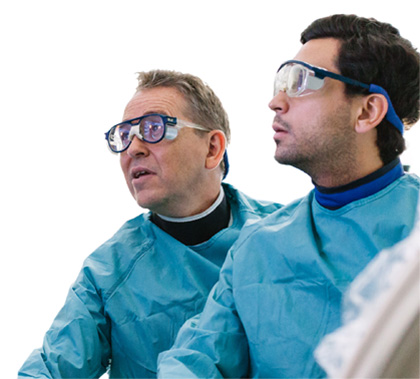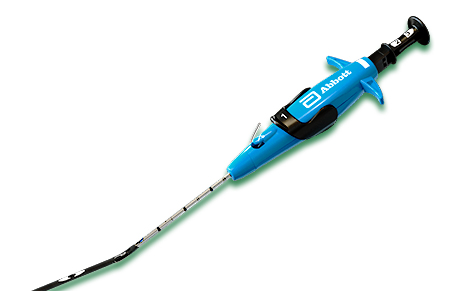In-Person Courses maximize hands-on time to help improve skills and address clinical, technical, and procedural challenges in care. Looking for our Coronary in-person courses? Find them here.
Discover more and download the course catalog for a comprehensive list of our medical education programs.
These courses are designed for Interventional Cardiologists, Vascular Surgeons, and Interventional Radiologists who want to practice complex treatment plans, procedures, and skills to improve their mastery of crucial aspects of patient care.
The focus of this course is on the diagnosis and treatment of complex endovascular lesions and understanding clinical practices that will facilitate consistent, high-quality therapy delivery for patients with Peripheral Artery Disease (PAD), venous disease, SFA disease, and more.
The multi-disciplinary Faculty use a practical, case-based approach to endovascular interventions to enhance the attendee's understanding of evaluating vascular access for a variety of interventions and formulating treatment algorithms that can be used in everyday practice.
Hands-on workshops cover guide wires, Supera™ Peripheral Stent deployment, mechanical thrombectomy, vessel closure, and cadaveric SFA/peroneal, tibial, and pedal access.
Designed For: Interventional Cardiologists, Vascular Surgeons, and Interventional Radiologists looking to improve skills and increase the complexity of the disease they are treating.
2.5 days
Our Specialty Courses offer deeper dives on specific topics with a focus on improving patient outcomes by addressing specific clinical, technical and procedural challenges in endovascular care.
This course offers didactic algorithm training with participant discussion, case-based learning and hands-on workshops that focus on the tools to tackle clinical challenges and to review the indications for use of Abbott’s carotid products in today’s environment.
Completion of this course will satisfy the training requirement for Abbott’s carotid stent systems. Please speak with your Abbott representative post-course about your 3 supervised cases to complete the training process. Completion of this course will satisfy the first steps of the FDA required product training for Abbott’s carotid products.

A specialized training opportunity limited to 1-2 trainees (and no more than 4) with a faculty proctor. Clinical areas of focus can include: Endovascular treatment of SFA/popliteal disease, carotid artery stenting, and vessel closure techniques. Virtual sessions available.

These courses may cover didactic topics such as safe femoral arterial, venous and alternative access techniques / potential complications. Workshops may include ultrasound and hands-on deployment of vascular closure devices.
Workshops at this program that are related to Abbott’s vessel closure products do not satisfy the device training requirements.

MAT-2102232 v4.0

Indications
The Supera™ Peripheral Stent System is indicated to improve luminal diameter in the treatment of patients with symptomatic de novo or restenotic native lesions or occlusions of the superficial femoral artery (SFA) and / or proximal popliteal artery with reference vessel diameters of 4.0 to 7.5 mm, and lesion lengths up to 140 mm.
Contraindications
The Supera™ Peripheral Stent System is contraindicated in:
Warnings
Precautions
The Supera™ Peripheral Stent System should only be used by physicians and medical personnel trained in vascular interventional techniques and trained on the use of this device.
Magnetic Resonance Imaging (MRI) Safety Information
Nonclinical testing has demonstrated that the Supera™ stent, in single and in overlapped configurations up to 250 mm in length, is MR Conditional. A patient with this device can be safely scanned in an MR system meeting the following conditions:
Under the scan conditions defined above, the Supera™ stent is expected to produce a maximum temperature rise of 7.6 °C after 15 minutes of continuous scanning.
In nonclinical testing, the image artifact caused by the device extends approximately 2 cm from the Supera™ stent when imaged with a gradient echo or spin echo sequence and a 3T MRI system.
Potential Adverse Events
Potential adverse events include, but are not limited to:
MAT-2103597 v3.0
STAY CONNECTED